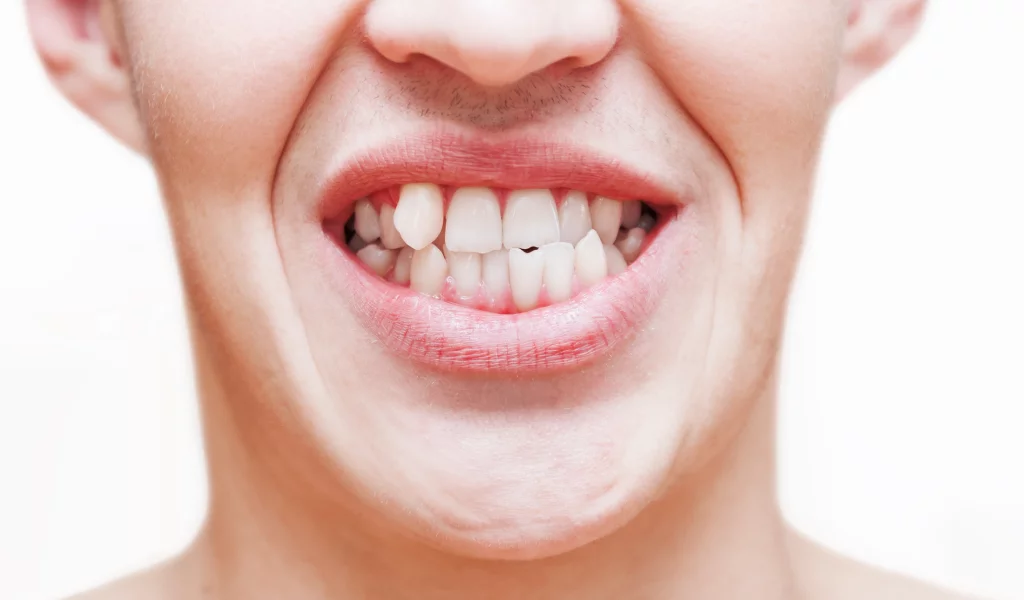
Facial development and breathing
There are no genes for asymmetry. There are only genes for symmetry! The way we breathe, chew and swallow is causing asymmetry of our face and possible narrowing of the airways.
The bone in the upper jaw (maxilla) gives the face its form
The upper jawbone (the maxilla) is a large bone that sits in the middle of the face and runs from the teeth up to the eyes, and hence largely determines facial appearance.
A common consequence of mouth breathing is that the upper jawbone grows downward and backward instead of forward and to the sides, resulting in a narrow upper jaw and face.
Since the maxilla comprises 85% of the nasal passages, an underdeveloped upper jaw results in more constricted nasal passages. This creates a vicious circle, in which it becomes harder and harder to breathe through the nose.
The tongue affects the shape of the maxilla
A well-developed upper jaw has a broad palate and low arch. The tongue’s natural resting place is up against the palate, where the tip of the tongue rests behind the front teeth. The teeth develop around the tongue and the upper jaw develops to the front and sides, stimulated by the tongue’s position behind the teeth and against the upper palate.
In mouth breathing, the tongue is placed in the middle of the mouth, or down in the oral cavity in order to allow air to pass in and out through the mouth, which has a negative effect on the development of the bone in the upper jaw.
Instead of being U-shaped, the palate becomes more V-shaped, making it hard for the teeth to fit. This also leads to the teeth not closing tightly against each other when biting.
The tongue and lips affect the position of the teeth
The tongue is one of the strongest muscles in our body. Even the cheeks and lips are strong muscles. Every day, a person swallows about two thousand times. When we swallow normally only the tongue is active. It already rests against the palate, and when we swallow it presses up against it, stimulating the upper jaw.
Considering that the powerful tongue pushes up towards the palate each time we swallow with a force of up to half a kilogram, we can see that the upper jaw is stimulated with the pressure of quite a few kilograms over the course of a day.
The muscles in the tongue, cheeks and lips determine the positioning of the teeth in both the upper and lower jaw. These muscles work in a similar way that braces do; light pressure applied over longer periods has the ability to move a tooth.
When swallowing incorrectly, we use more muscles than just the tongue, and the tongue’s force is directed elsewhere rather than up against the palate.
This not only leads to under stimulation of the palate and a more crowded upper jaw, it can also affect the positioning of all the teeth in a negative way, which can result in crooked teeth.
Chew to grow your maxilla and to improve your airways
Our ancient ancestors chewed for hours a day, every day. And because they chewed so much, their mouths, teeth, throats and faces grew to be wide and strong and pronounced. Food in industrialised societies is so processed that it hardly requires any chewing at all. It is one of the reasons so many of us snore today, why our noses are stuffed, our airways clogged, why we need sprays, pills, surgical drilling, just to get a breath of fresh air.
Unlike other bones in the body, the maxilla, is made of a membrane bone that is highly plastic and can remodel and grow more dense, even in our 70s and likely longer. We need stemcells for the maxilia to change shape. The way we produce and signal stem cells to build more maxilia bone is by engaging the masseter muscle, by clamping down on the back molars, over and over, also known as chewing. The more we ‘gnaw’ the more cells we release, the more bone density and growth we’ll trigger, the younger we’ll look and the better we’ll breathe.



